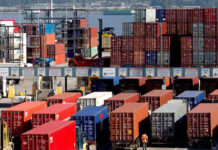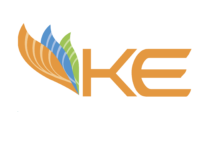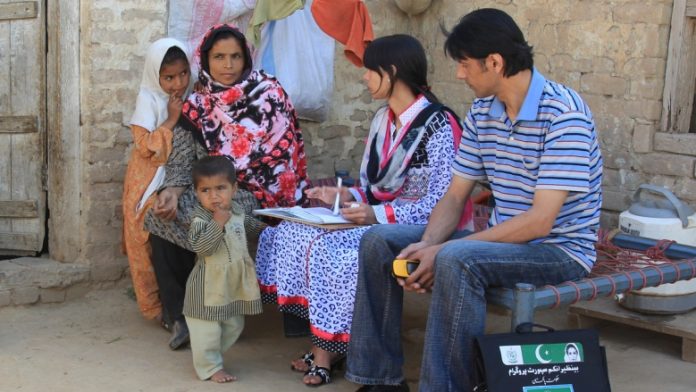Pakistan is a lower middle-income economy, located in the heart of South Asia, with a GDP estimated at $284 Billion (2016), and a population of around 207 million (2017). With such a large population, it is surprising that the Pakistani banking sector has a very limited penetration rate – serving around 3 million borrowers (1.5% of the population) and 20 million depositors (9.6% of the population). About 100 million adults in Pakistan do not have access to formal and regulated financial services. This number accounts for about 5% of the world’s unbanked population, which stands at 2 billion.

Despite a series of reforms in the past few years, the percentage of women who own a bank account has remained stagnant at around 3% since 2011. In addition, there has been little increase in the 0.3% of women who have borrowed from a formal financial institution; and, the 1.5% of women who have saved at a formal financial institution. In the case of microfinance, Pakistan is far behind other economically similar countries.
Only 2% of the ‘poor’ population in Pakistan has access to microfinance services, compared to 35% in Bangladesh, 29% in Sri Lanka, 8% in Nepal and 3% in India. According to SMEDA, Small and Medium Enterprises (SMEs) constitute 90% of the business enterprises and provide 80% of the employment opportunities to non-agriculture labor force in Pakistan. While State Bank of Pakistan (SBP) reported a 27 % increase in SME financing from March 2016 to March 2017, the share of SME financing as a percentage of total private-sector financing dropped to 7.99% from 8.2% during the same period.
Need for financial inclusion
In 2008, the State Bank of Pakistan launched a Financial Inclusion Policy (FIP) initiative in collaboration with the Department for International Development (DFID). Under the FIP, the Government of Pakistan had set a preliminary target of reaching out to three million microfinance borrowers by 2010 and 5 million by 2012. In May 2015, Pakistan launched its National Financial Inclusion Strategy (NFIS), a roadmap to help the country achieve its financial inclusion goals. It is built on the Asian Development Bank’s (ADB) “Access to Financial Services (A2F)” budget support program. Pakistan’s goal is to achieve universal financial access, with a target of expanding formal financial access to at least 50% of adults, including women and youth, and to increase the percentage of SME loans in bank lending to 15% by 2020.
Three-tier approach
The financial inclusion policy was initially a five-year program, which began in 2008 and intended to achieve preliminary goals by 2013. The total funding by DFID amounted to around £50 million. It intended to provide assistance and create financial depth through a three-tier approach – Macro, MESO and Micro. The macro tier includes infrastructure at the government level, supported by the State Bank of Pakistan, the government itself and DFID; the MESO level includes credit enhancing and providing units like microfinancing banks, commercial banks and other financial intermediaries with liquidity; and, lastly, the Micro level includes smaller fund managers and committees at individual and household levels.

Recent Development
The most recent development in terms of financial inclusion is the approval of a further $137 million by the World Bank for Pakistan’s NFIS. The target and objectives are aligned with the initial goals set by DFID as early as 2008. “1) Direct Support to the NFIS Implementation, aims to provide direct support to implementation of the NFIS in line with the priorities laid out in the NFIS action plan; 2) Supporting Expansion of Access Points for Financial Services, aims to support investments, capacity building and analyses that will drive financial access points; 3) Improving Access to Microfinance and to Financial Services for Micro, Small, and Medium Enterprises” (World Bank).
Where does Pakistan stand now?
Pakistan’s has set ambitious goals for financial inclusion, however, the progress has been slower than expected. To achieve the goals and improve the future prospects through realization of these goals a lot more needs to be done. Despite, the mega launch of NFIS in 2015 with a structured roadmap and ample funding, financial inclusion in Pakistan only increased by 1% from 2015 to 2016 (Financial Inclusion Insights (FII) Report 2016).
The Financial Inclusion Insights Report 2016 entailed a very detailed analysis of the progress from 2015 to 2016, ranging from increase in overall adult population holding a bank account to mobile banking and gender-based financial inclusion. According to the survey analytics, Pakistan’s proportion of the adult population holding a bank account from a full service financial institution remained stagnant at 9% from 2015 to 2016. The FII survey further highlights that more than half of the adult population saved money, but around 77% of the savers had saved money informally and around 20% had used Rotating Credit and Savings Associations (ROSCAs).
Pakistan also has one of the highest mobile money users/accounts penetration in the region, standing at 5.8% of the adult population as compared to the regional average of 1.8%. However, Financial Inclusion Insights’ report further revealed that around 93% of these mobile money users hadn’t registered a proper account until 2016 and preferred using over the counter transactions only.

Apart, from active borrowing and mobile banking, another strategy employed by NFIS is to utilize microfinance institutions for easier access to bank loans to try and reach out to a bigger and more diverse audience and focus on segments like minorities, females and lower SECs. Pakistan has been fairly successful so far in this venture and the number of microfinance borrowers has doubled since 2011 according to the report published by Pakistan Microfinance Network. The penetration within the districts had also increased by the end of 2016, reaching out to more than 130 districts, as compared to 104 in 2011.
Pakistan’s NFIS also tries to encompass financing for Small and Medium Enterprises. According to the recent report by State Bank of Pakistan, the loans and finance for SMEs had increased by 27% from 2016 to 2017, i.e., by around Rs380 billion. The private sector finance had increased by around Rs699 billion during the same period and is almost double the SME financing amount. Another policy being capitalized upon to improve the financial inclusion is the Branchless Banking sector in Pakistan. In fact, according to the latest IMF country report, State Bank of Pakistan has been relying primarily on branchless banking to drive and pave the way for financial inclusion. NFIS & SBP heavily funded this avenue to support the 2020 vision, and as of March 2017 the sector included around 24 million money wallets, circulating over $5 billion of transactions every quarter (Source: IMF Country Report).
On the right track
The policy so far has been on the right track and includes a wholesome macro, MESO, and micro level mix of interventions. Yet, the performance can’t be solely measured by numbers unless the condition of the ‘neglected’ parts of the community is also analyzed. The money wallets might seem a lucrative avenue, but it should be kept in mind that SBP also reported that more than 40% of the money-wallets are inactive and females only account for around 22% of the money wallets operated by branchless banking. Similarly, by the end of June 2017 the SME financing share in the overall financing was just hovering around 6.06% with a high default rate.
Overall, it can be concluded that financial inclusion in Pakistan is holding strongly onto the NFIS principles with a few hiccups here and there. Yet, the aspirations are higher than the performance so far and with new $130 million injected by the World Bank, Pakistan can reach its goals if stronger initiatives are taken to not only enhance branchless banking and microfinance, but to sustain it through a variety of measures.
The regional counterparts i.e. Bangladesh and India already have set up examples of a successful NFIS strategy for Pakistan to follow. A stronger wave of education and awareness, especially among women and regions like Gilgit-Baltistan, Baluchistan, peripheries of Sindh and the Punjab is needed. Measures are needed to formulate stringent policies regarding SME financing to counter high default rates as well. NFIS needs not only to be triggered rather it needs to be contained and sustained for a longer goal of sustainable and equitable growth.

























